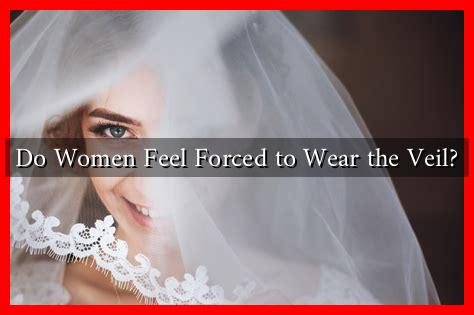-
Table of Contents
Do Women Feel Forced to Wear the Veil?
The question of whether women feel compelled to wear the veil is a complex and multifaceted issue that varies significantly across different cultures, religions, and individual experiences. The veil, often associated with Islamic practices, can symbolize a range of meanings from religious devotion to cultural identity. However, the perception of coercion versus choice remains a contentious topic. This article explores the various dimensions of this issue, examining cultural, social, and psychological factors that influence women’s experiences with the veil.
The Cultural Context of the Veil
The veil, or hijab, is worn by many Muslim women around the world, but its significance can differ widely based on cultural context. In some societies, wearing the veil is seen as a personal choice and a form of empowerment, while in others, it may be perceived as a symbol of oppression.
- Religious Significance: For many women, wearing the veil is an expression of their faith and commitment to Islamic principles. It can serve as a reminder of their spiritual beliefs and values.
- Cultural Identity: In some cultures, the veil is an integral part of national or ethnic identity. Women may wear it to connect with their heritage and community.
- Social Pressure: In certain regions, societal expectations can create pressure to conform to traditional dress codes, leading some women to feel they have no choice but to wear the veil.
Case Studies: Voices from Women
To better understand the diverse experiences of women regarding the veil, it is essential to consider personal narratives and case studies. These stories highlight the complexity of choice and coercion.
- Fatima, a 25-year-old from Egypt: Fatima describes her decision to wear the hijab as a personal choice rooted in her faith. She feels empowered by her ability to express her identity and believes that the veil allows her to be judged for her character rather than her appearance.
- Amina, a 30-year-old from Saudi Arabia: Amina shares a different perspective, stating that while she initially wore the veil out of religious obligation, she later felt pressured by societal norms. She now advocates for women’s right to choose whether or not to wear the veil.
- Leila, a 22-year-old living in France: Leila, who does not wear the veil, discusses the stigma faced by women who choose to do so in a secular society. She emphasizes the importance of respecting individual choices, regardless of personal beliefs.
Statistics and Research Findings
Research on women’s experiences with the veil reveals significant insights into the factors influencing their choices. A study conducted by the Pew Research Center in 2017 found that:
- Approximately 62% of Muslim women in countries like Indonesia and Turkey reported wearing the hijab as a personal choice.
- In contrast, 38% of women in countries such as Afghanistan and Iran indicated that they felt compelled to wear the veil due to legal or societal pressures.
These statistics illustrate the stark differences in experiences based on geographical and cultural contexts. The findings suggest that while many women embrace the veil as a symbol of faith, others may feel constrained by external expectations.
The Role of Education and Empowerment
Education plays a crucial role in shaping women’s perspectives on the veil. Access to education can empower women to make informed choices about their attire and challenge societal norms. Programs that promote gender equality and women’s rights can help create an environment where women feel free to choose whether or not to wear the veil without fear of judgment or repercussions.
Conclusion: A Spectrum of Experiences
The question of whether women feel forced to wear the veil cannot be answered with a simple yes or no. The experiences of women vary widely based on cultural, social, and individual factors. While some women find empowerment and identity in wearing the veil, others may feel constrained by societal expectations. It is essential to respect and support women’s choices, recognizing that the veil can symbolize both freedom and oppression depending on the context.
Ultimately, fostering an environment that encourages dialogue and understanding about the veil can help bridge the gap between differing perspectives. By promoting education and awareness, society can empower women to make choices that reflect their beliefs and values, free from coercion.
For further reading on this topic, you can explore resources from organizations such as Pew Research Center and Human Rights Watch.


